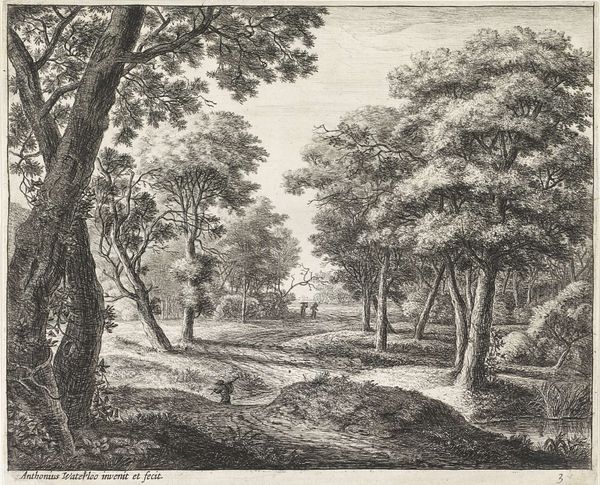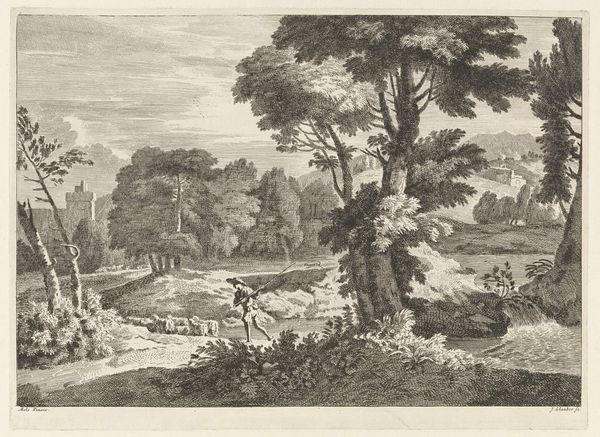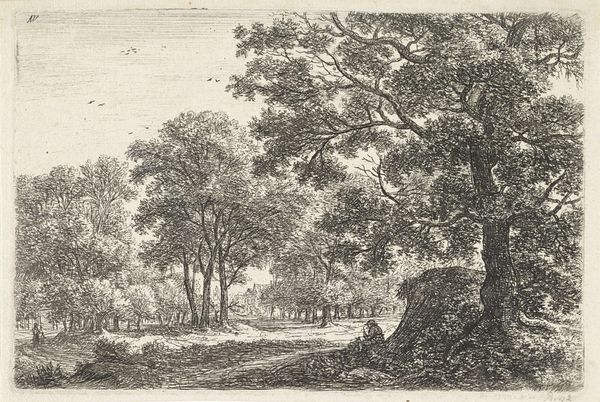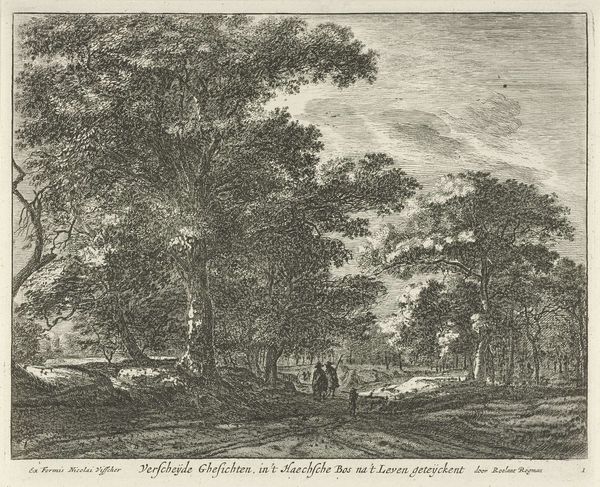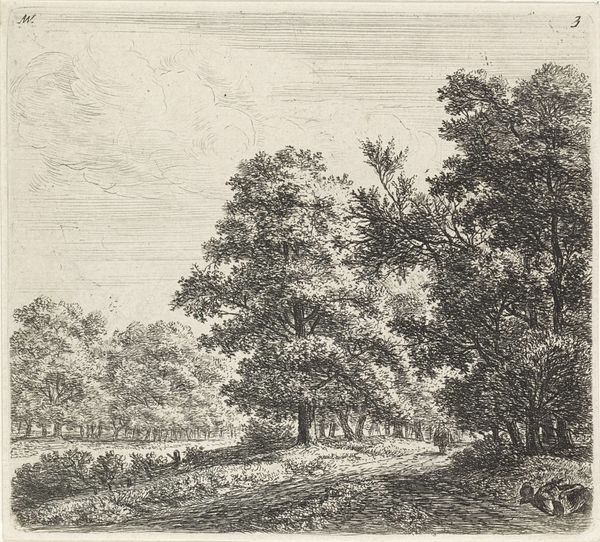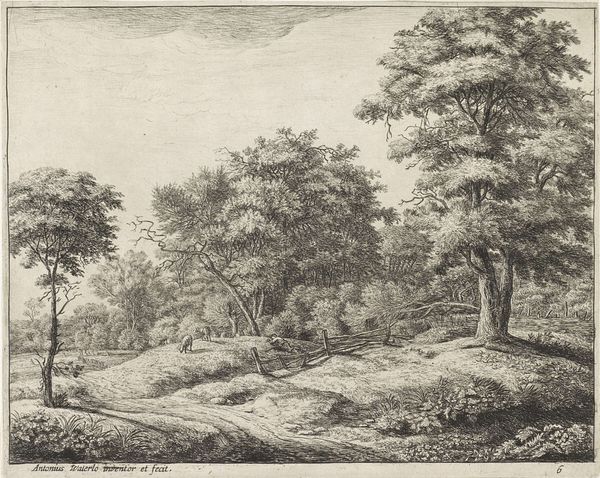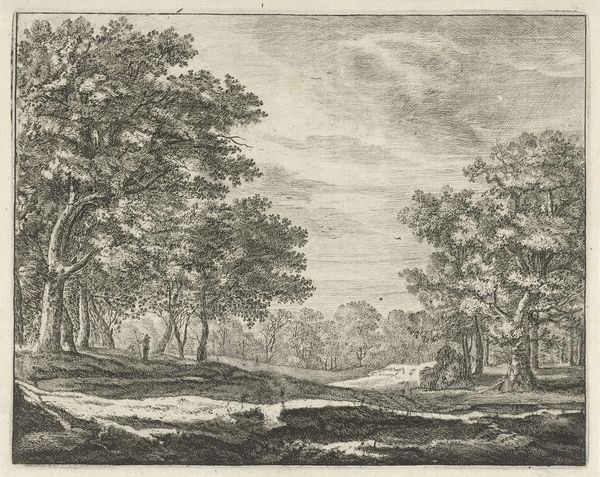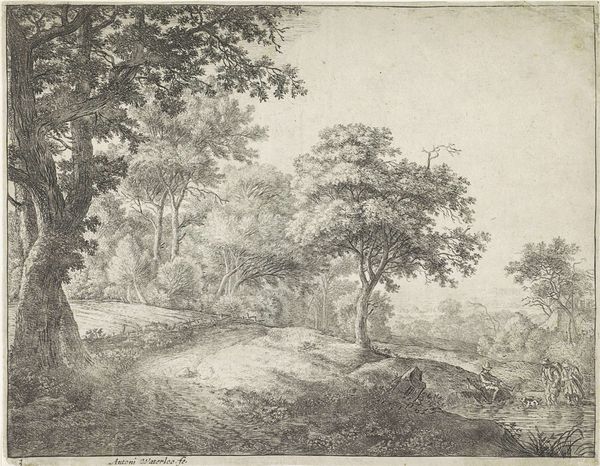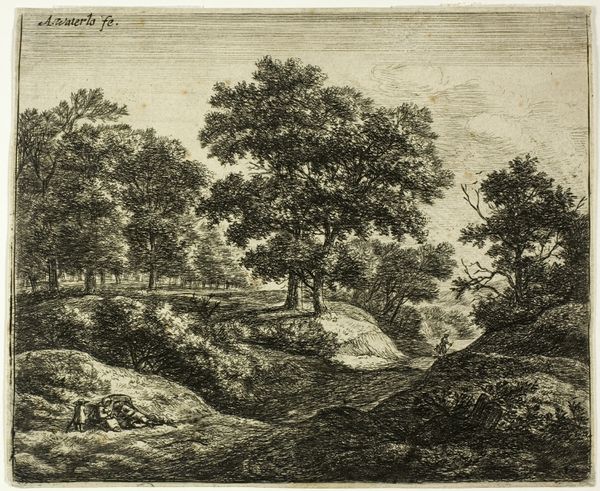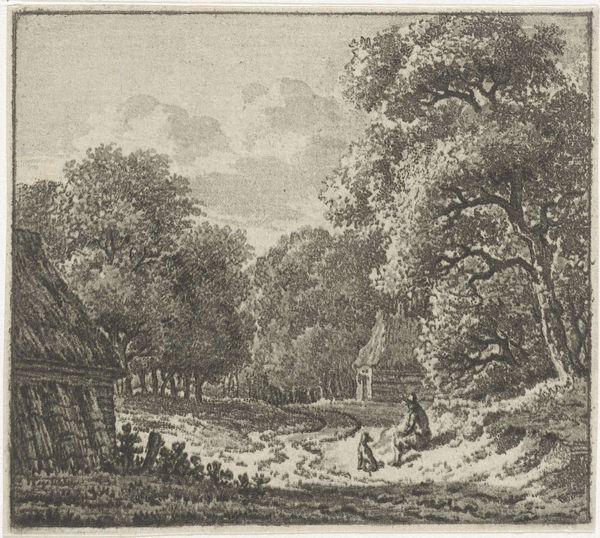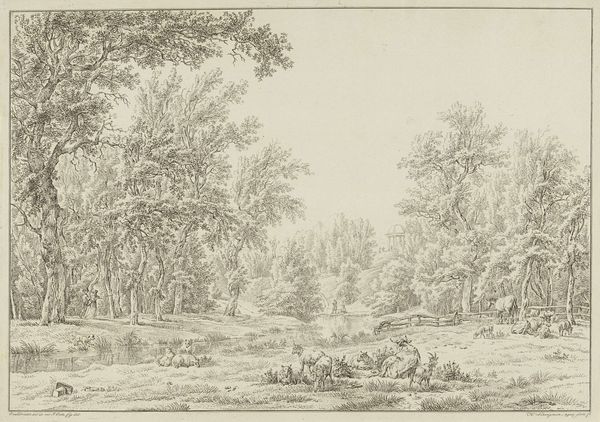
etching
#
dutch-golden-age
#
etching
#
landscape
#
realism
Dimensions: height 235 mm, width 295 mm
Copyright: Rijks Museum: Open Domain
Anthonie Waterloo created this etching of a horseman by a gate in the Netherlands sometime in the 17th century. Prints like this one were not just art objects, they were commodities produced for a growing art market. Artists like Waterloo responded to a demand for landscape views, tapping into a burgeoning sense of national identity tied to the land itself. The detailed rendering of nature speaks to a culture that valued both scientific observation and aesthetic appreciation. Consider the social context: the Dutch Golden Age, a period of immense economic growth and global trade. This prosperity fueled a market for art among a rising middle class. Institutions such as the Guild of Saint Luke played a crucial role, regulating artistic training and sales. Waterloo was a master of his craft, his skill evident in the delicate lines and atmospheric perspective. To truly understand this image, we delve into the archives: market reports, guild records, and even personal letters. These sources reveal the complex interplay of art, commerce, and society in the Dutch Golden Age.
Comments
No comments
Be the first to comment and join the conversation on the ultimate creative platform.
